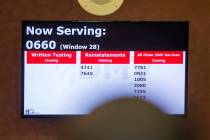Keep on truckin’: Proposed city ordinance goes too far
OK, you’ve sunk your life savings into one of those new mobile food trucks. You know you picked the right jurisdiction, because city officials say their top priority — reflecting the wish of the City Council — is a thriving and sustainable business community.
You’re all gassed up, coolers full of food, and you’re out in plenty of time for the lunch hour. Now all you’ve got to do is … wait for a report from the surveyors, out with their chains, transits and theodolites, certifying that there’s no one else serving food within 1,320 feet of you in any direction.
That’s right. City leaders regularly proclaim they’re seeking to attract and encourage young, innovative entrepreneurs. But the Planning Commission in mid-March narrowly approved a regulation that would prevent food truck operators on public streets from setting up shop within 1,320 feet — a quarter mile — of an existing brick-and-mortar restaurant. “That is just ridiculous,” says Douglas Porter, a former restaurant owner who now owns Curbside Cafe, a gourmet burger food truck. “You wouldn’t be able to have a food truck anywhere. I don’t know what they were thinking.”
City officials, faced with complaints from brick-and-mortar restaurants in the downtown Arts District when the mobile eateries moved in, thought they’d brokered a compromise featuring a 150-foot buffer. But when that proposed ordinance went to the Planning Commission, restaurant owners from the Fremont East entertainment district showed up to press for the quarter-mile exclusion zone.
“During the week we are very slow,” said Maria Calvino, who along with her husband, Jose Calvino, owns Mamita’s restaurant. “The weekend is when we make our money. Then all these vendors come in and take part of our revenue, and I don’t think it is fair.”
In written testimony to the commission, the Calvinos pointed out that restaurants pay thousands of dollars in rent and have been struggling to survive downtown until recently.
The ordinance must still be OK’d by the City Council.
City governments get into these difficulties when they license businesses in the first place. Once business owners have paid the vigorish for fees and licenses, they naturally believe the regulators who depend on their tax revenues should protect them from unwelcome competition.
Still, the outrage of a restaurateur who expects to finally pay this week’s bills with diners attending some downtown event — only to see a pair of motor coaches rumble into view and set up outside the front door, able to undercut his prices thanks to lower overhead — is easy to understand.
But this is another fine example where the city that governs least, governs best.
The original 150-foot compromise, which was coupled with an understanding that trucks can stay in the same location longer than the old, largely unenforced limit of 30 minutes, seemed reasonable.
But expecting a coach operator to prove he or she isn’t within a quarter mile of someone who may be selling coffee and hot dogs around the corner and a quarter mile away? Or hiring a bunch of new city food truck inspectors to stalk around with laser range finders set for 1,320 feet?
Ridiculous.


















